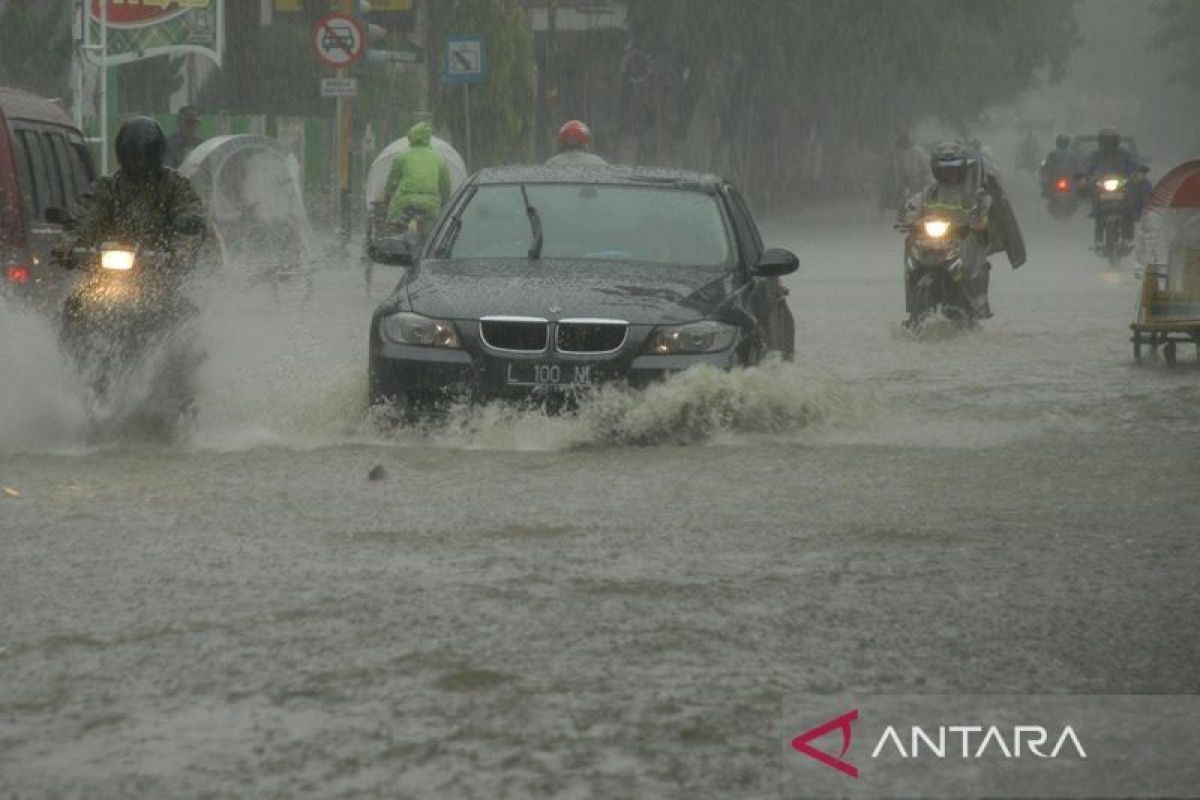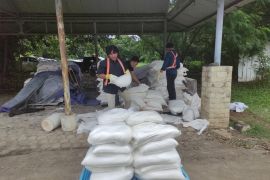Based on the magnitude, the BMKG recorded that earthquakes, with a magnitude of above 5.0, hit 219 times in 2023. Meanwhile, earthquakes of magnitude of below 5.0 occurred 10,570 times.
Throughout 2023, earthquakes that were felt by the public occurred 861 times, while damaging earthquakes struck 24 times.
Head of the Earthquake and Tsunami Center at the BMKG, Daryono, stated that 15 damaging earthquakes were triggered by faults, while the other nine damaging earthquakes were caused by plate subduction.
Meanwhile, earthquakes, with a potential to trigger a tsunami, occurred twice in 2023, namely the Maluku Earthquake on January 10, 2023, with a magnitude of 7.9, and the West Sumatra Earthquake on April 25, 2023, with a magnitude of 7.3.
The BMKG noted that the two earthquakes only caused light damage to several houses and generated a minor tsunami that was non-destructive in nature.
To anticipate the impact, in 2023, the BMKG had built 95 new seismograph installations, thereby taking the total number to 533. Those seismographs support the operation of the Indonesia Tsunami Early Warning System (InaTEWS).
To expand the coverage of earthquake information and tsunami early warning, in 2023, the BMKG installed 75 Warning Receiver System New Generation (WRS NewGen) equipment in areas prone to earthquakes and tsunamis, taking the total figure to 500 so far.
Daryono assessed that Indonesia, with its tectonic complexity, needs to continue to strengthen earthquake and tsunami mitigation efforts. This is deemed important to deal with the possibility of large earthquakes that trigger tsunamis in the future.
Dissemination of information and education are deemed essential to be intensified to support people to master ways to stay safe during earthquakes and tsunamis.
Disaster literacy
In 2023, the BMKG continued to make efforts to strengthen people's disaster literacy on earthquakes and tsunamis by creating earthquake- and tsunami-themed science books.
The agency also made efforts to strengthen the capacity of BMKG Partners and communities in earthquake- and tsunami-prone areas through the Earthquake and Tsunami Field School (SLG) program for stakeholders and the community and the BMKG Goes To School (BGTS) program for students.
So far, the SLG program has involved 37,293 participants, while the BGTS program has involved 39,157 students nationwide.
As of 2023, the agency had also facilitated nine communities in eight districts to get international recognition from the UNESCO as Tsunami Ready Communities.
Moreover, the BMKG has facilitated 10 communities to get national-level Tsunami Ready Community recognition. Efforts to get international-level recognition will be continued in 2024.
As an effort to bolster disaster preparedness capacity at national critical infrastructures, the BMKG has facilitated operators to carry out earthquake and tsunami preparedness training and simulation at the Tanjung Benoa Port in Bali, Pelindo Industrial and Port area in Banten, Minangkabau Airport in West Sumatra, and Yogyakarta International Airport in Yogyakarta.
To identify tsunami hazards and reference of safe coastal spatial planning based on tsunami risk, the BMKG has the Tsunami Hazard Map Survey activity, with the aim of mapping tsunami-prone areas and acquiring elevation data for tsunami modeling.
It is also aimed at verifying the results of tsunami modeling based on the results of the field survey and improving coordination with regional governments in earthquake and tsunami mitigation activities.
Until 2023, the BMKG had succeeded in compiling around 150 Tsunami Hazard Maps on various tsunami-prone coasts in Indonesia.
Building structure
In addition to disaster literacy, it is important to pay attention to the security of building structure. To anticipate and mitigate the hazard of earthquake, the main solution is building earthquake-proof buildings.
Daryono assessed that during earthquakes, buildings with weak structures that collapse due to the shocks are, in fact, the cause of fatalities.
For instance, the 6.4-magnitude earthquake that struck Yogyakarta on May 27, 2006, claimed more than 5,700 lives. Meanwhile, an earthquake with the same magnitude and depth that hit Suruga Bay on August 11, 2009, only claimed one life. This proves that earthquake-proof buildings determine the safety of people.
In addition, it is necessary to consider the condition of the land. Thick soft soil can trigger shock amplification that will magnify the earthquake shock due to soil layer resonance. These weak zones or soft soil can be mapped using seismic microzonation.
The National Standardization Agency (BSN) has set several Indonesian National Standards (SNI) related to earthquake anticipation, one of which is the SNI 1726:2019 on Procedures for Earthquake Resistance Planning for Building and Non-building Structures.
Deputy for Standard Development at BSN Hendro Kusumo stated that in addition to the SNI 1726:2019, there are several other SNI, such as the SNI 2847:2019 on Structural Concrete Requirements for Buildings and Explanations.
With the status as an earthquake-prone country, it has become increasingly important for Indonesia to build disaster preparedness and always anticipate all possibilities.










